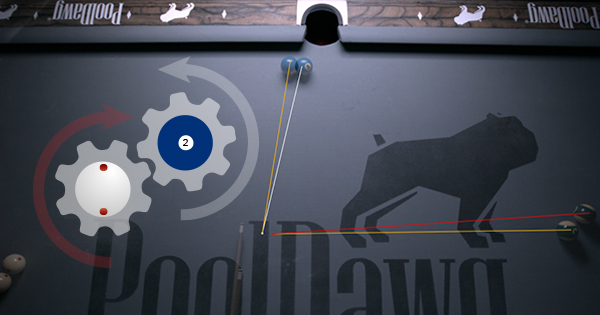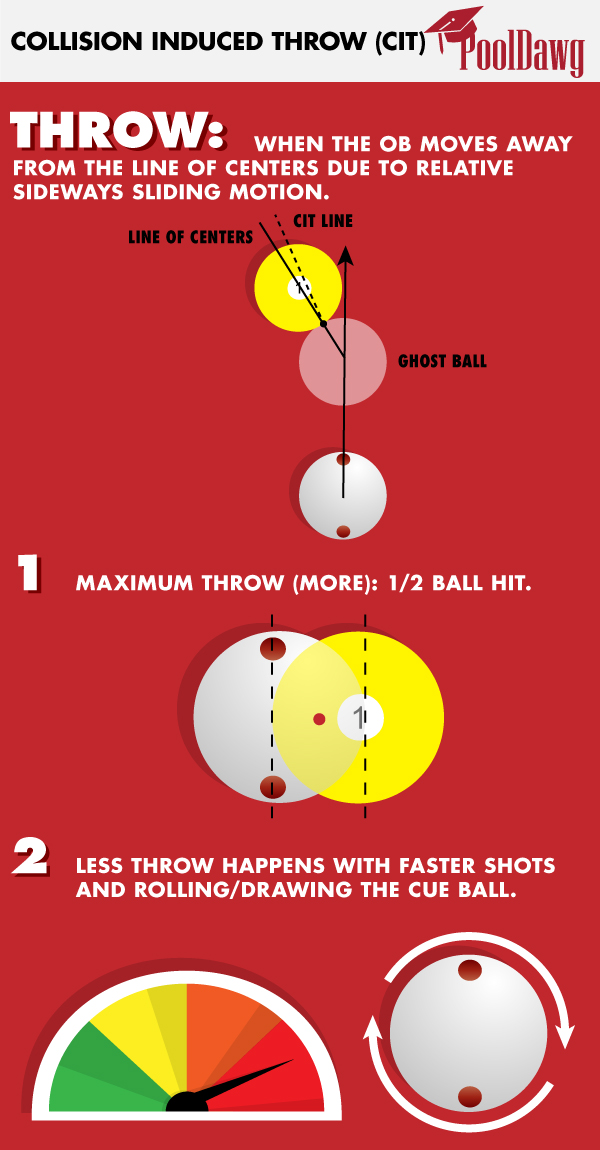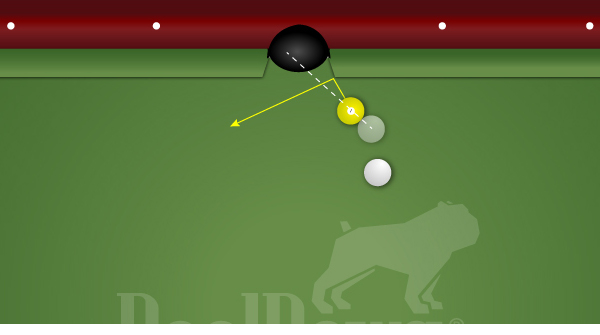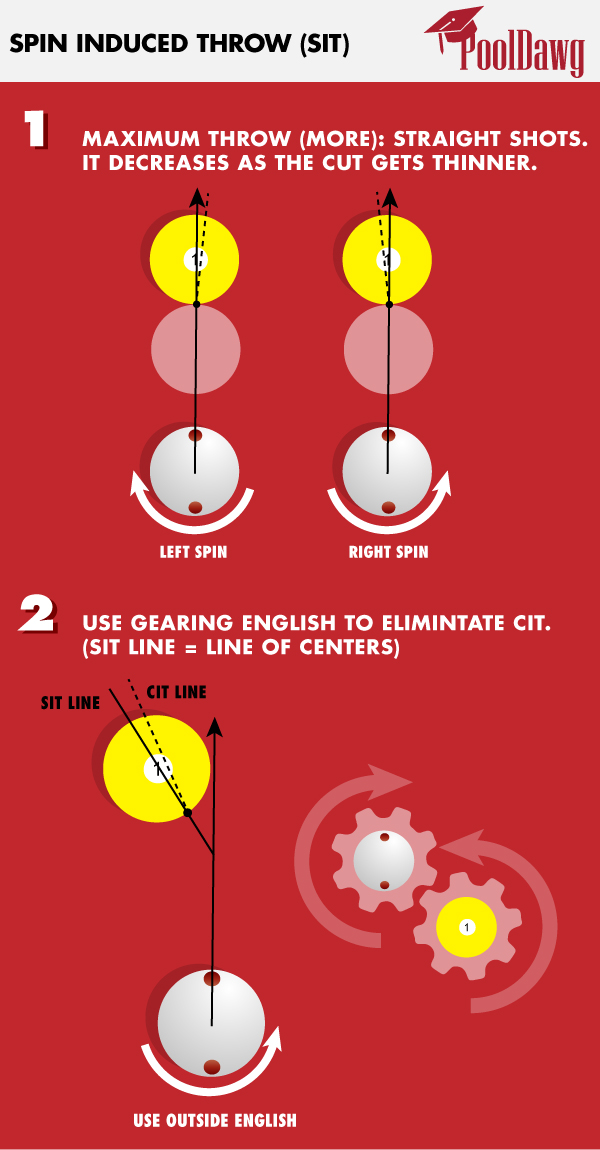
In the previous article, How to Make "Impossible" Shots Using Throw, we looked at throw when two object balls were frozen together. Here is another example of the concept of throw where you can definitively see, from the overlaid video, how the cue ball spin changes the path of the object ball when compared to the same shot with a rolling cue ball with no side spin. That's what is known in billiards terms as "Throw".
In this article let's look at the friction effects between the cue ball and the object ball. The basic idea is that there are two kinds of throw, collision induced throw (CIT), and spin induced throw (SIT).
One of the reasons that many players miss relatively easy shots (or any shots for that matter) is that they don't take throw into consideration.
For CIT, it is at a maximum for about a half ball hit. There is more throw for a slower shot than one with a faster pace, and also more for a sliding (skidding) cue ball than a rolling or drawing cue ball.

Here is a shot the gets missed a lot.

In this case we, we are close to the object ball so our cue ball is slight sliding at the contact, we are hitting the cue ball slowly and this is about a half ball hit. All three of these factors: slow speed, skidding cue ball, and the half ball hit max-out the throw on the object ball. What happens is that, because the throw isn't accounted for, the object ball catches the point and we miss.
For SIT, it is a maximum for straight in shots, and decreases as the cut gets thinner, however, it doesn't completely go away. There is an interesting place on cut shots where CIT is just matched by SIT. This amount of English is called gearing English. For half ball hits, 40% of English is required, for fuller hits less and for thinner hits more. This gearing effect is why a lot of players learn to use outside spin on their cut shots to eliminate throw.

The key idea underlying all of this is that pool is more of a physical game than a geometrical game and need to always take the throw into consideration for our shots. The simplest way to account for throw is by aiming all our cut shots for the face of the pocket (over cutting) and not the heart of the pocket. This allows us to use the vertical axis of our cue ball, and avoid the effects of squirt, SIT, etc. Many top players that are comfortable using side spin prefer to use gearing English to "take the throw out of every shot."
 Frank Says: "Dirty Balls will throw more than clean balls so make sure to clean your billiard balls regularly for the most consistent results!"
Frank Says: "Dirty Balls will throw more than clean balls so make sure to clean your billiard balls regularly for the most consistent results!"
The big point of this article, that will help you pocket more balls, is to understand the effects of throw, and make sure to adjust for it!
Good luck and see you on the road!
- RELATED ARTICLES
- How to Aim and Control the Cue Ball – By Florian Kohler
- Is There Such a Thing as Draw Induced Throw? – By Tom Simpson
- Aiming Thin Cut Shots – By Mark Finkelstein